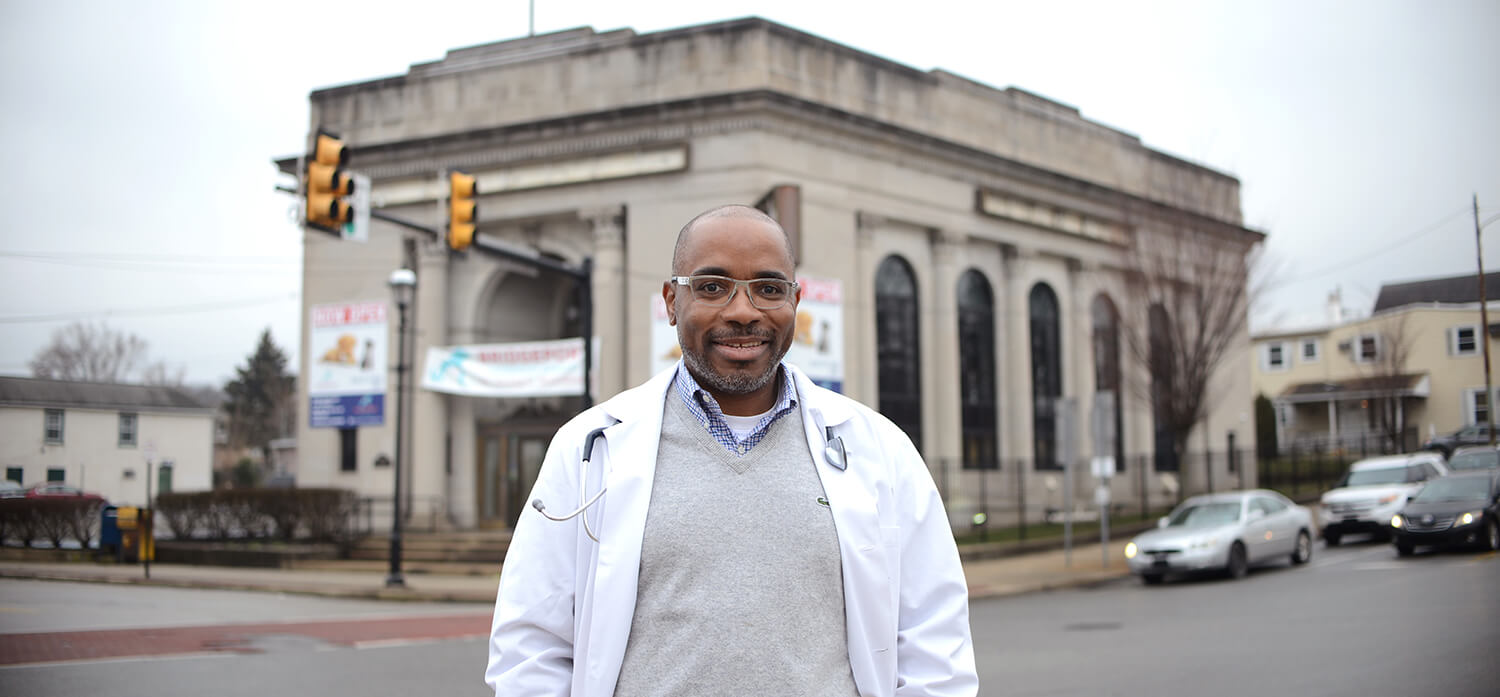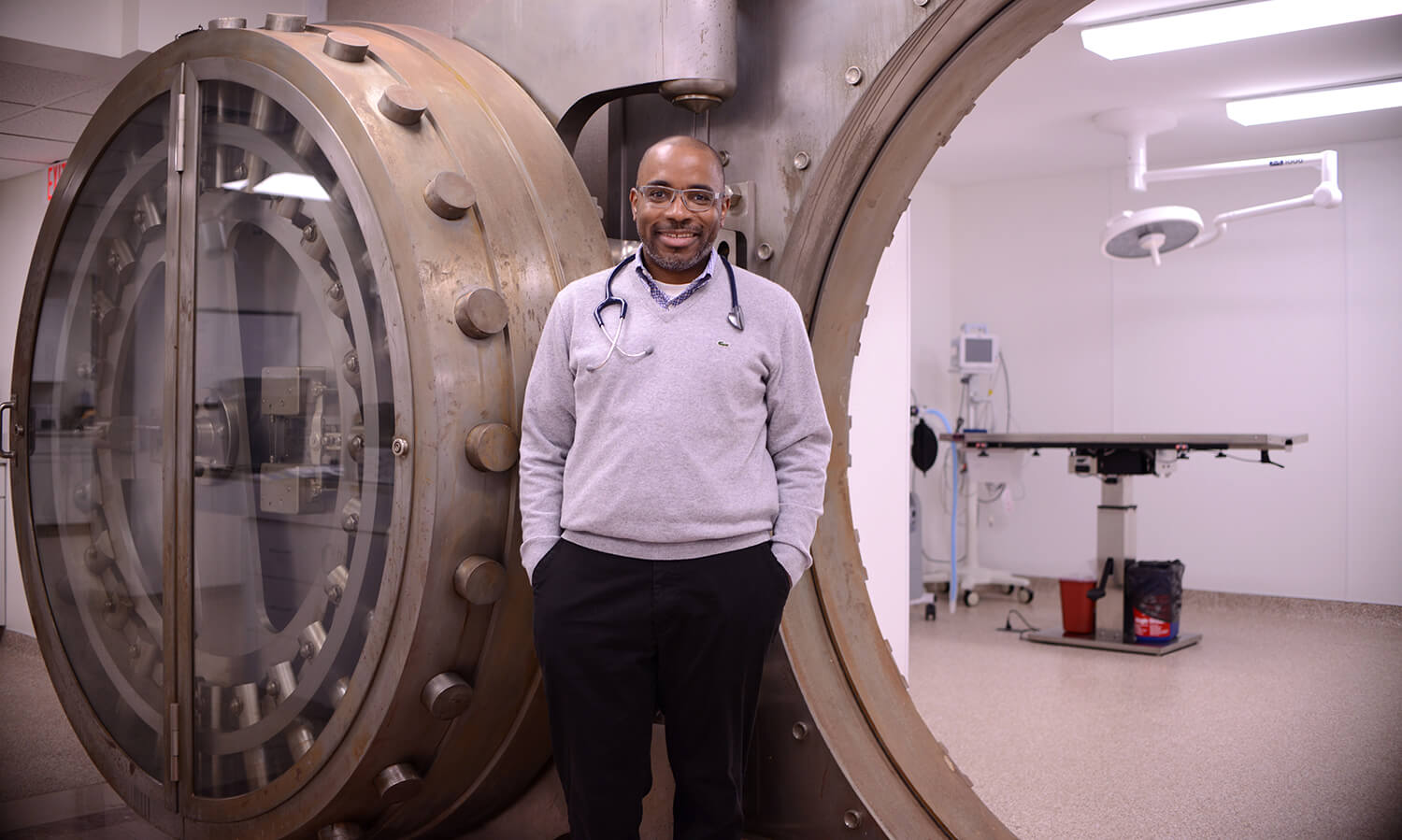 Dr. Craig McLahan at his clinic at the corner of DeKalb and West 4th Streets in Bridgeport, Pennsylvania.
Dr. Craig McLahan at his clinic at the corner of DeKalb and West 4th Streets in Bridgeport, Pennsylvania.
Of everything you’d expect to find in a bank vault, sleeping cats probably aren’t one of them. But that’s just what you’ll see in the grand old bank building on a Bridgeport, Pennsylvania, corner. The felines are patients of Bridgeport Veterinary Hospital, a small animal practice in the once-upon-a-time depository.
Dr. Craig McLahan, V’02, opened the hospital last summer, bringing to life a space that stood vacant for years. He’d been searching for a while for the right location to start a hospital. When the building went on the market, he jumped.
“This was the perfect place,” McLahan said. “I spent a lot of time getting to know the community. It’s close-knit, people really care about each other. There are a lot of pets, and owners want veterinary care they can walk to and that supports the local economy. I also learned that residents really love the old bank building—it’s a flagship for the borough. Everyone wanted to see it restored to its former magnificence.”
Bridgeport’s borough council and zoning commission weren’t going to approve just any interested buyer. According to McLahan, they’d turned down a few different proposals. Fortunately, his plan was just right for the borough’s needs.
McLahan renovated the interior of the neoclassical building, outfitting it with four exam rooms and a reception area, as well dog villas and play areas for boarding and day care. He preserved the vaults—one as a cat ward and one as the surgical suite. “They’re really quiet, which is great for cats,” he said. As the business grows, he will expand to the second floor and create additional daycare space or make it a cats-only area.
 McLahan stands outside of the vault—his clinic is a renovated former bank.
McLahan stands outside of the vault—his clinic is a renovated former bank.
He said, “People are excited for us—people with skittish pets are really appreciative of our services.”
McLahan is referring to the hospital’s “no waiting room” policy. “Waiting rooms are terrible places for animals—and for people. They’re full of anxiety,” he said. “We don’t have one. Our receptionist takes people right back to an exam room.”
This is one of the many seemingly small, but on aggregate very impactful, details that form McLahan’s unique vision for the hospital.
“After Penn Vet, I did a lot of relief work for several practices,” he said. “I saw a lot of good in the way people did things; I also saw opportunities to make changes. Before vet school, I worked in the pharmaceutical industry, so I wanted to bring some of that corporate sensibility into my practice. In the end, I am a small business owner who is part of a community and a local economy, and I’m very mindful that my decisions affect my neighbors.”
While designing the hospital, McLahan wrote a mission statement that remains his touchstone. It promises to serve the health and welfare of animals, to respect the dignity and recognize the merit of employees, and to be good citizens.
Every decision McLahan makes, from working to reduce the practice’s carbon footprint to offering professional development for staff and discounts for seniors and veterans, considers the hospital’s immediate community and the larger world.
Not even a year into the practice, McLahan’s eye is on the horizon. “I’m excited. I have so many plans for future. I know my clients and staff are the greatest assets in making them happen.”